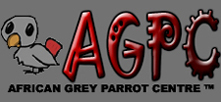Red has been long known as the color love. It also signifies love and passion but also danger. People associate the color red with love, Valentines, danger, desire, speed, strength, violence, anger, emergency exit signs, stop signs, and blood. Its usual attributes are strength, force, power, control, and leadership. Stimulation, warmth, excitement, good health, physical energy, love, sex, passion, courage, and protection are also associated with this strong color. But in pet birds especially in parrots–being red is an entirely different story.
Why Some Parrots Are Red : The red in parrots
When it comes to colors in parrots, the most common is green. But did you know that there is no pigment or tinge of green present in parrots’ feathers? According to experts, although parrots appear green, only pigments present in parrots’ feathers are red and yellow.
Red parrots becoming popular pet parrot preferences because they exude mystical beauty. But did you know that some parrots are red because of their melanin chemistry and feather structure?
Studies show that some parrots are red due to Tyndall Effect. During Tyndall Effect, light scatters, thus, reflecting off the feather structure. This process also results to the illusion of a variety of colors.
Why Some Parrots Are Red : Pigments (psittacin or carotenoids)
Another reason why some parrots are red is because specific kinds of this bird have pigments in their feathers called psittacin or carotenoids–the ones that gives carrots and yellow squash their respective colors. These are usually influenced by certain environmental factors and elements like food intake or diet. Experts found out that red parrots emerge because the colors of the nutritional elements of the food they take are intensified. Although foods don’t usually influence a parrot’s color, it is quite significant in the process because good food will result to good health shown in the sheen of a parrot’s feathers.
Since feathers are parrot’s–generally birds’–most distinctive characteristic, on-going studies about the coloration of parrots are conducted worldwide. Most of these studies have found out that a parrot’s color can mean several things like assertiveness and other behavioral contexts.
The most popular red parrot in pet trades today is the Red-Breasted Senegal. Although is has a moderate talking ability, many parrot enthusiasts purchase this red parrot because they are playful and independent Always climbing, chewing and playing with their toys, red-breasted Senegals are among the favorite selection of parrot pets because they have friendly nature and their ability to learn and perform tricks. Since they create very low noise, this red parrot is suitable as a family pet bird especially for those who live in city apartments. Although it has a friendly nature, this red parrot should be handled and trained regularly so they will remain tamed.
About the Author
This content is provided by Low Jeremy. It may be used only in its entirety with all links included. For more information on Pet Parrot & other useful information, please visit http://pet-parrot.articlekeep.com

